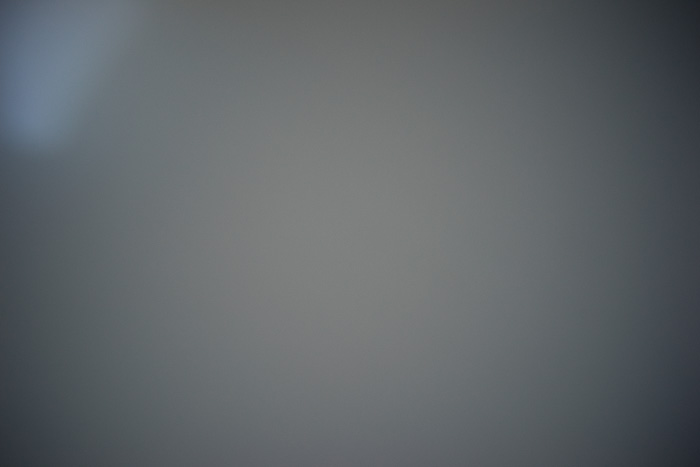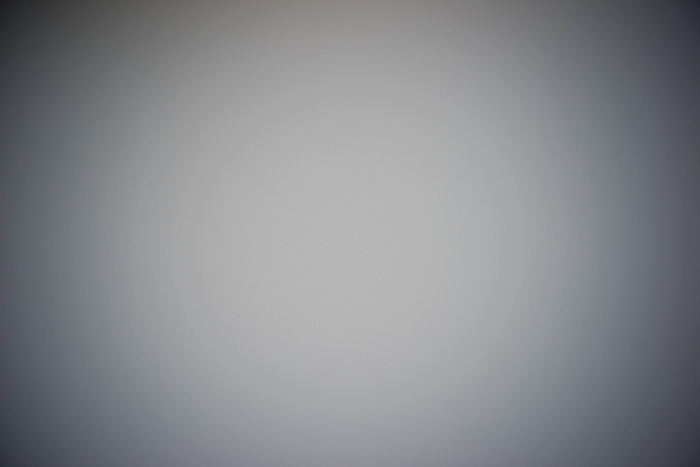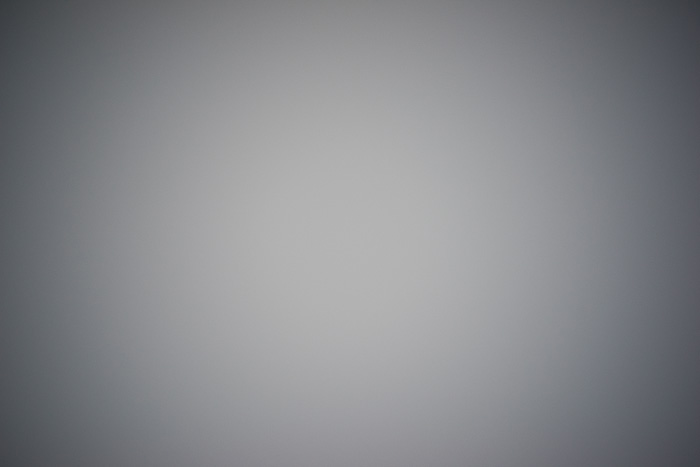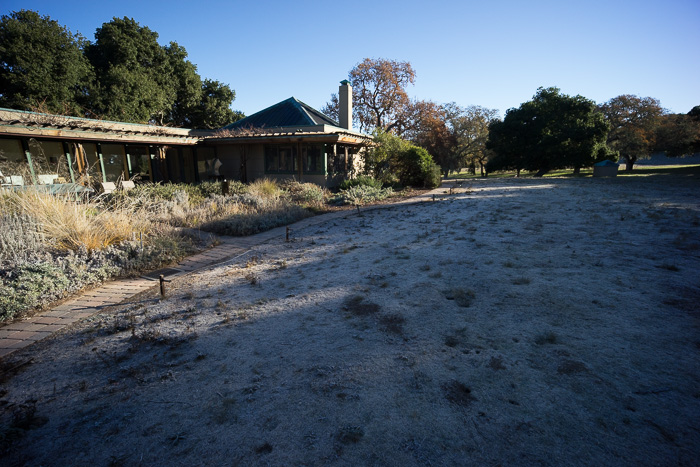There’s been some interest in how the Leica 16/18/21 Tri Elmar ASPH — aka the WATE, for Wide Angle Tri-Elmar — performs on the Sony a7R. Because it is designed with its exit pupil quite a ways from the sensor plane, there is reason to suspect that it should work well on the a7R.
The results are presented uncorrected by Adobe Flat Field. Here’s an image of the ExpoDIsc at 16mm and f/4, to give you an idea of falloff and color cast:
Oops, what’s that light patch in the upper left? That can’t be right! It isn’t. It’s what happens when light leaks through the cutout in the lens hood for viewfinder clearance. To use the ExpoDisc in the field, you should cover the hole with gaffer tape; you don’t need it since the a7R has no optical finder.
With a piece of black gaffer tape in place, here’s the ExpoDisc at f/4 and 16mm:
f/4 and 18mm:
f/4 and 21mm:
Here’s the scene at f/8 and 16mm:
At f/8 and 18mm:
And at f/8 and 21mm:
There’s some falloff, but it looks about the same as on the M240. The corner color cast issues are minimal. Because there are three focal lengths to test, there are a lot of pictures to look at. For those of you who would prefer to just cut to the chase, here is my description of what I found.
At 16mm in the center, the image is pretty darned crisp at f/4, and improves at f/5.6; f/8 is about the same, f/11 is about the same as f/4, and f/16 is soft because of diffraction.
18 mm at f/4 is a tad soft in the center, but there’s a big jump in crispness at f/5.6, and the image is really quite nice there. f/8 is about the same as f/5.6, f/11 is a hair softer, and f/16 is really soft.
21 mm at f/4 is a softer in the center than at 18mm, and there’s that big jump in crispness at f/5.6, and the image is good there. f/8 is a little sharper than f/5.6, f/11 is softer, and f/16 is really soft.
At 16 mm in the upper left corner, there’s just a hint of that smeared look, but the general soft look is what I’ve seen with this lens on the M240. f/5.6 brings a big improvement, f/8 is quite nice, f/11 is softening up, and f/16 is soft.
At 18 mm in the upper left corner, there’s even less of the smeared look, but the general soft look is what I’ve seen with this lens on the M240. f/5.6 brings a marked improvement, but it takes f/8 to get good quality. f/11 is softening up, and f/16 is soft.
At 21 mm in the upper left corner, there’s no smearing, but it’s a little soft. f/5.6 brings some improvement, and f/8 is quite good. f/11 is close to f/8, and f/16 is soft.
It looks like f/8 is the best all-around aperture, and it also looks like this lens is a good match for the a7R; there’s a tiny bit of smearing at f/4, but that’s not an aperture where the lens performs well at the edges anyway.
Here is the Photoshop stack for the center images.
Here is the Photoshop stack for the upper left images.
Next post: JPEGs of selected focal lengths and aperture from this series.







Leave a Reply